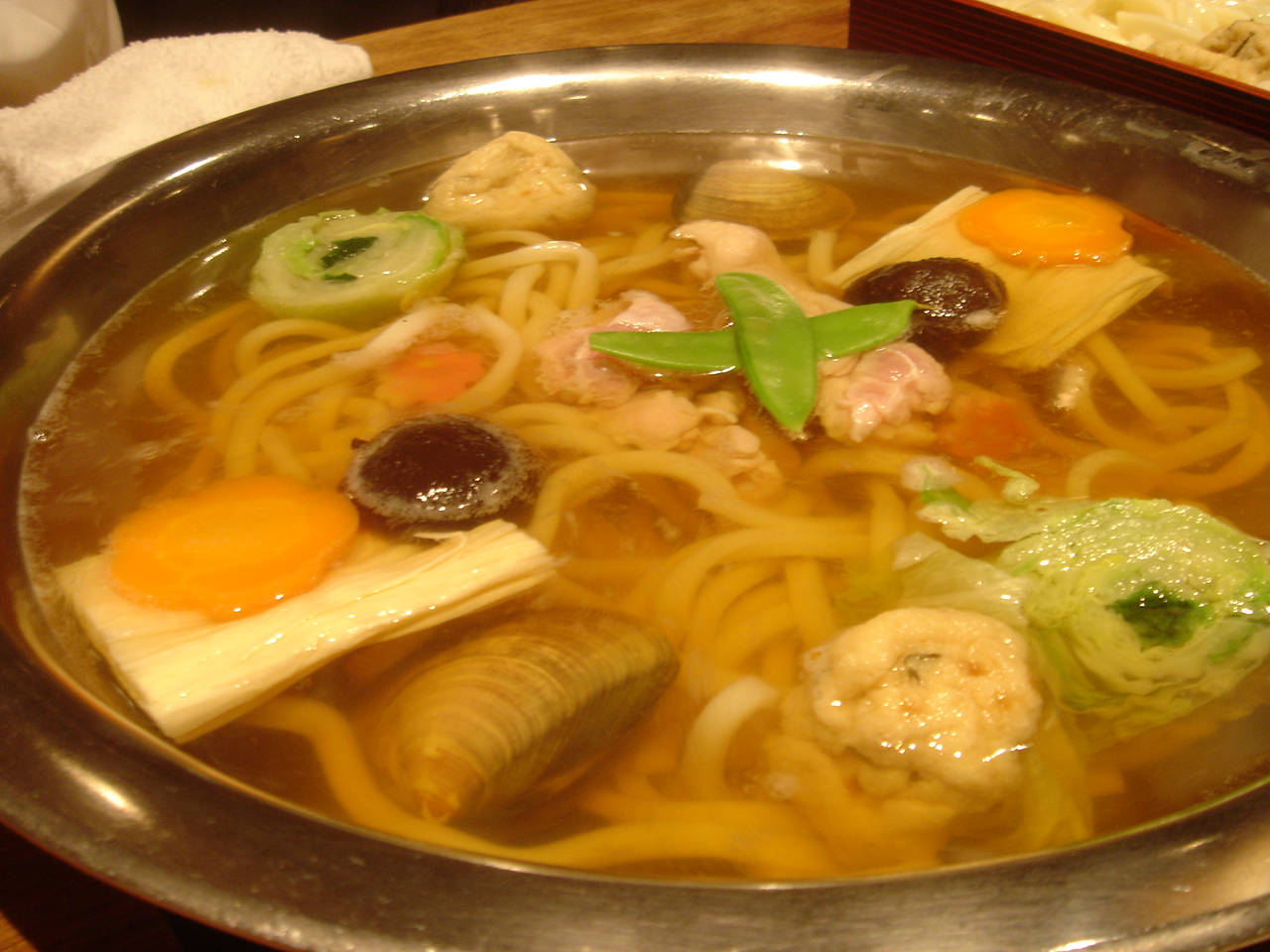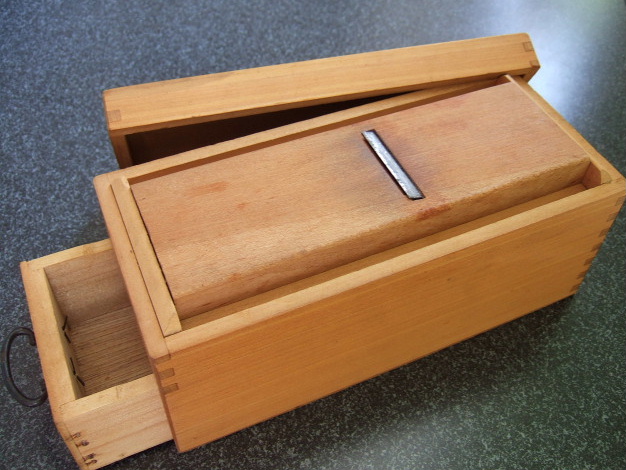|
Donabe
''Donabe'' (Japanese: wikt:土鍋, 土鍋, literally "earthenware pot") are pots made out of a special clay for use over an open flame in Cuisine of Japan, Japanese cuisine, and in the case of semi-stoneware Banko ware of high petalite content. Often, the food is cooked at the table on a gas burner for various ''nabemono'' dishes such as shabu-shabu and dishes served simmering including nabeyaki udon. They are sized by Cun (unit), ''sun'', one of the Japanese units of measurement#Length, Japanese units of measurement. The ''donabe'' is usually glazed on the inside and porous on the outside. While the material is similar to earthenware or stoneware, donabe can be used over an open flame as well as in an oven if three precautions are taken. First, the outside of the donabe should be dry before use, as moisture within the clay will expand in the heat and may chip or crack the pot. Secondly, the pot should be heated gradually to reduce the possibility of cracks due to heat stress. Thi ... [...More Info...] [...Related Items...] OR: [Wikipedia] [Google] [Baidu] |
Clay Pot Cooking
Clay pot cooking is a process of cooking food in a pot made of unglazed or glazed pottery. History Cooking in unglazed clay pots which are first immersed in water dates at least to the Etruscans in first century BC but likely dates to several centuries earlier. The Romans adapted the technique and the cooking vessel, which became known as the Roman pot, a cooking vessel similar to those made since the 1960s by Romertopf. According to Paula Wolfert, "all Mediterranean food used to be cooked in clay." In the Han Dynasty, pots unglazed on the exterior known as fus (now called sandy pots) were used for wet clay cooking. In Japan clay pots are mentioned from the 8th century and originally referred to as nabe. As pots made from other materials entered use, the Japanese clay pots were distinguished by calling them donabe; "do" means clay or earth. Cooking in clay pots became less popular once metal pots became available. Clay remained popular for those dishes that depended on the u ... [...More Info...] [...Related Items...] OR: [Wikipedia] [Google] [Baidu] |
Iga Ware
is a style of Japanese pottery traditionally produced in Iga, Mie, former Iga Province, central Japan. History Iga ware's origins are believed to date to the second half of the 7th century and 8th century CE. The area has long produced a clay known for its high resistance to fire. In the early phase it did not differ from nearby Shigaraki ware. The kilns are thought to have been established during the Keichō era (1596-1615) under the rule of Lords Tsutsui Sadatsugu (1562–1615) and later Tōdō Takatora (1556–1630) and Tōdō Takatsugu (1602–1676) of Iga Province. The most well-known kilns were at Makiyama and Marubashira, in the Ayama district of Iga city. Historically, in a Japanese tea ceremony room, vases used to be made out of cut bamboo in order to match the ambiance of the room. Precious vases were offered as gifts to feudal ''daimyō'' lords. Starting in the late 16th century Momoyama period, Iga ware water vases with characteristic "ear" lugs appeared. The ... [...More Info...] [...Related Items...] OR: [Wikipedia] [Google] [Baidu] |
Iga-yaki
is a style of Japanese pottery traditionally produced in Iga, Mie, former Iga Province, central Japan. History Iga ware's origins are believed to date to the second half of the 7th century and 8th century CE. The area has long produced a clay known for its high resistance to fire. In the early phase it did not differ from nearby Shigaraki ware. The kilns are thought to have been established during the Keichō era (1596-1615) under the rule of Lords Tsutsui Sadatsugu (1562–1615) and later Tōdō Takatora (1556–1630) and Tōdō Takatsugu (1602–1676) of Iga Province. The most well-known kilns were at Makiyama and Marubashira, in the Ayama district of Iga city. Historically, in a Japanese tea ceremony room, vases used to be made out of cut bamboo in order to match the ambiance of the room. Precious vases were offered as gifts to feudal ''daimyō'' lords. Starting in the late 16th century Momoyama period, Iga ware water vases with characteristic "ear" lugs appeared. The ea ... [...More Info...] [...Related Items...] OR: [Wikipedia] [Google] [Baidu] |
Nabemono
''Nabemono'' (鍋物, なべ物, ''nabe'' "cooking pot" + ''mono'' "thing"), or simply ''nabe'', is a variety of Japanese cuisine, Japanese steamboat (food), hot pot dishes, also known as one pot dishes and "things in a pot". Description Nabemono are stews and soups containing many types of ingredients that are served while still boiling. Because of that, Nabe is typically enjoyed in cold days or the winter. In modern Japan, nabemono are kept hot at the dining Furniture, table by portable stoves. The dish is frequently cooked at the table, and the diners can pick the cooked ingredients they want from the pot. It is either eaten with the broth or with a dip. Further ingredients can also be successively added to the pot. There are two types of nabemono in Japan: lightly flavored stock (mostly with kombu) types such as ''yudōfu'' (湯豆腐) and ''mizutaki'' (水炊き), eaten with a dipping sauce (''tare sauce, tare'') to enjoy the taste of the ingredients themselves; and stro ... [...More Info...] [...Related Items...] OR: [Wikipedia] [Google] [Baidu] |
:Category:Japanese Words And Phrases ...
{{Commons Words and phrases by language Words Words Words A word is a basic element of language that carries an objective or practical meaning, can be used on its own, and is uninterruptible. Despite the fact that language speakers often have an intuitive grasp of what a word is, there is no consen ... [...More Info...] [...Related Items...] OR: [Wikipedia] [Google] [Baidu] |
Food & Wine
''Food & Wine'' is an American monthly magazine published by Dotdash Meredith. It was founded in 1978 by Ariane and Michael Batterberry. It features recipes, cooking tips, travel information, restaurant reviews, chefs, wine pairings and seasonal/holiday content and has been credited by ''The New York Times'' with introducing the dining public to "Perrier, the purple Peruvian potato and Patagonian toothfish". The premier event for the magazine is the Food & Wine Classic in Aspen, Colorado. The Classic features wine tasting, cooking demonstrations, featured speakers, as well as a cooking competition. Held annually in June, the event is considered the kickoff to the Aspen summer season and celebrates its 38th anniversary in 2022. The winner of ''Top Chef'', the reality television cooking competition, is featured in a spread in this magazine. History Michael and Ariane Batterberry's early writing work on food included the 1973 book ''On the Town in New York, From 1776 to the Pr ... [...More Info...] [...Related Items...] OR: [Wikipedia] [Google] [Baidu] |
List Of Japanese Cooking Utensils
The following items are common Japanese cooking tools used in preparing Japanese cuisine. For a list of general cooking tools see the list of food preparation utensils. Knives *''Deba bōchō'': kitchen carver for meat and fish *'' Fugu hiki'', ''Tako hiki'', and ''yanagi ba'': ''sashimi'' slicers *'' Nakiri bocho'' and '' usuba bocho'': vegetable knives for vegetables *'' Oroshi hocho'' and '' hancho hocho'': extremely long knives to fillet tuna *''Santoku'': general purpose knife influenced by European styles *''Udon kiri'' and '' soba kiri'': knife to make udon and soba *'' Unagisaki hocho'': eel knife Pots, pans, and bowls *''Abura kiri'': drainer tray for oils *'' Agemono nabe'': deep frying pot *''Donabe'': ceramic pot for use on an open flame *''Hangiri'': rice barrel *''Makiyakinabe'': rectangular pan for ''tamagoyaki'' *''Mushiki'' and '' seiro'': steamers *''Otoshi buta'': drop lid *'' Suihanki/rice cooker'': electric appliance for cooking rice *'' ''suribachi'' and ''s ... [...More Info...] [...Related Items...] OR: [Wikipedia] [Google] [Baidu] |
Mashiko Ware
is a type of Japanese pottery traditionally made in Mashiko, Tochigi. Early pottery in Mashiko dates back to the Jōmon and Yayoi periods. ''Mashikoyaki'' is often thought of as simple and rustic in style, with brown and maybe a little red glaze, but modern pottery made in Mashiko today is found in many styles, on account of the creative freedom brought to Mashiko by Shoji Hamada. Modern ''Mashikoyaki'' dates only to 1853, when a potter discovered that local clay here was ideal for ceramics. The style was popularized in 1930 when Hamada, later designated as a Living National Treasure, set up a kiln in Mashiko. Hamada's student, Tatsuzō Shimaoka, was also designated as a Living National Treasure and worked in Mashiko from 1953 until his death in 2007. Mashiko is a folkware kiln site that is unlike some of the other older kiln sites around Japan. The town is open to newcomers whether or not they are potters or of other professional backgrounds in arts, sciences and educati ... [...More Info...] [...Related Items...] OR: [Wikipedia] [Google] [Baidu] |
Shigaraki Ware
Shigaraki ware (信楽焼) is a type of stoneware pottery made in Shigaraki area, Japan. The kiln is one of the Six Ancient Kilns in Japan. Although figures representing the tanuki are a popular product included as Shigaraki ware, the kiln and local pottery tradition has a long history. History The development of kilns during the medieval period are thought to have taken place through the transformation of Sue ware technology. In the later half of the Heian period, Sue ware production came to an abrupt decline, with production now centralizing in the Owari, Mino, Bizen, and Omi provinces. Political collapse in the Heian period caused Sue ware potters to begin producing inexpensive wares such as ''tsubo'' (jars), ''kame'' (wide mouthed bowls), and ''suribachi'' (mortars or grinding). The Sue ware workshops began producing in characteristic regional blocks. All these led to the development of kilns in the region known as the ‘Six Old Kilns’. The regional blocks cons ... [...More Info...] [...Related Items...] OR: [Wikipedia] [Google] [Baidu] |
Kyoto
Kyoto (; Japanese: , ''Kyōto'' ), officially , is the capital city of Kyoto Prefecture in Japan. Located in the Kansai region on the island of Honshu, Kyoto forms a part of the Keihanshin metropolitan area along with Osaka and Kobe. , the city had a population of 1.46 million. The city is the cultural anchor of a substantially larger metropolitan area known as Greater Kyoto, a metropolitan statistical area (MSA) home to a census-estimated 3.8 million people. Kyoto is one of the oldest municipalities in Japan, having been chosen in 794 as the new seat of Japan's imperial court by Emperor Kanmu. The original city, named Heian-kyō, was arranged in accordance with traditional Chinese feng shui following the model of the ancient Chinese capital of Chang'an/Luoyang. The emperors of Japan ruled from Kyoto in the following eleven centuries until 1869. It was the scene of several key events of the Muromachi period, Sengoku period, and the Boshin War, such as the Ōnin War, the Ho ... [...More Info...] [...Related Items...] OR: [Wikipedia] [Google] [Baidu] |

.jpg)





